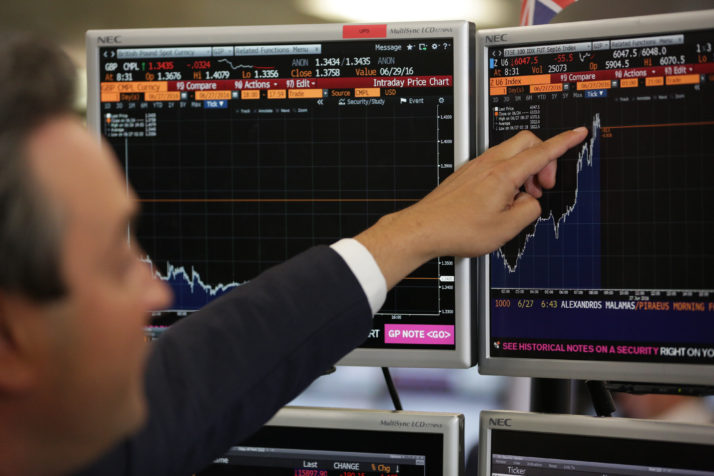European markets have made significant losses again on Thursday, as risk appetite reversed following unsuccessful talks between Ukraine and Russia.
There can’t have been much expectation for anything more given the wide-ranging demands and ridiculous justifications we’ve seen from Russia for the invasion, or “special military operation”. But I guess high-level talks are a small step in the right direction which has provided some hope.
With the lack of progress and the continued assault on Ukraine and its people, the sanctions from the West will keep coming which should ensure uncertainty remains high in the markets and any rallies vulnerable. Today’s declines only partially offset yesterday’s gains but I wouldn’t read too much into that. The worst is probably yet to come for Ukraine.
ECB proceeds with tapering despite downside risks to the economic outlook
Regardless of what the market reaction would have us believe, I’m not sure what about the ECB decision and press conference today was actually surprising. Markets were already pricing in rate hikes this year so the phasing out of net asset purchases over the coming months and the end of PEPP this month falls very much in line with that.
The revision to the inflation forecasts was not surprising given the recent data. It was still mildly shocking to see the 2022 number as you don’t see such revisions too often but under the circumstances, it was always going to be substantial.
The press conference from Christine Lagarde contained all of the context and caveats you’ve come to expect from these events. Just the right amount of ambiguity that leaves traders with barely and more information – to put it generously – than they had before it started. All in all, today went as you’d expect and the outlook remains highly uncertain and dependent on how the crisis in Ukraine plays out.
US inflation is near the peak
US inflation rose again in February by a staggering 0.8%, or 7.9% on an annual basis. The number was in line with expectations though and the likelihood is we’re near the peak which could come next month. That won’t comfort those feeling the squeeze as a result of these widespread price increases, especially when faced with much higher energy prices, but the trajectory should start to look more promising after that. This leaves little doubt that the Fed will raise rates next week and at the upcoming meetings though as it hopes to get to grips with inflation having already ignored it for too long.
Oil cautiously higher after mixed messages from UAE
Oil prices are rising again, up around 4% on the day at one point, as talks between Ukraine and Russia give little cause for optimism. The risk of further disruption remains high, especially with more sanctions to come that will make life harder for Russia and companies less keen to do business with them.
The one ray of hope comes from the UAE, following comments yesterday that suggested they favour higher output. That was tempered later, though, by the country’s energy minister who reaffirmed their commitment to the OPEC+ agreement, so who knows where that leaves us. One dissenting voice within the group could at least spark more discussion about the need for higher production, although I can think of one influential member that may fiercely oppose it.
Gold should remain supported and could take another run at the highs
Gold is hovering around $2,000 after plunging on Wednesday as part of the big risk-reversal we saw across the markets. It’s not made up an enormous amount of ground today, despite commodity prices heading higher and risk aversion sweeping through the markets once more.
While the talks today yielded no positive outcome and both sides still seem miles apart in their expectation, it seems the very fact that these discussions are taking place and at a high level is providing some hope. Gold should still remain well supported unless we see any real breakthrough and while it may have just failed at the first time of asking, record highs may not be far away.
Bitcoin remains vulnerable to shifts in risk-appetite
Bitcoin is back below $40,000 after giving up almost all of Wednesday’s gains in early trade. The surge in risk appetite saw bitcoin soar higher yesterday, a move that was always vulnerable given the massive volatility and headline-driven price action. There was also a suggestion that President Biden’s executive order on digital assets may have been behind the rally but perhaps not. Cryptos remain very sensitive to gyrations in risk-appetite and today they’ve been caught on the wrong side of it.





































